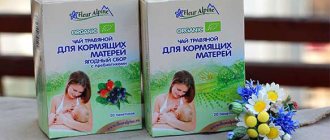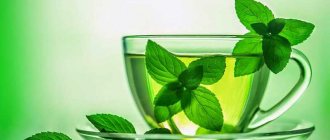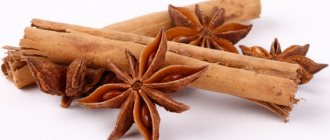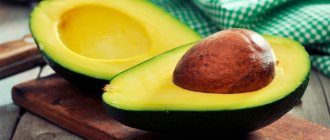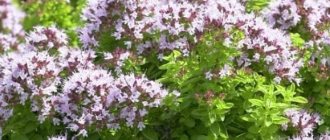The period of breastfeeding often becomes a real test for a young mother. Doctors advise avoiding foods that cause allergies. The baby's body can react to the slightest changes in diet. In addition, there is constant nervous tension due to changes in the usual lifestyle and worries about the baby’s health. Proper use of chamomile during breastfeeding can have a positive effect on quality of life. It has a beneficial effect on the well-being of women and children. This medicinal plant can relieve digestive problems and help combat feelings of excessive anxiety.
Composition of a medicinal plant
There are many varieties of chamomile. Therefore, the choice of a medicinal plant during the feeding period should be taken responsibly. Pay attention to chamomile. It is also known as maiden flower, queen flower, and romaine.
The medicinal collection sold in almost every pharmacy consists of dried inflorescences of the plant of the same name. Healing herbs can be added to your medicine cabinet for internal and external use.
Flowers are collected in ecologically clean regions. The best time for collection is warm, sunny days. Then they are dried in natural conditions in a well-ventilated room.
Pharmacies offer natural medicine in the form of dry raw materials and tea bags. Brew the healing mixture with boiling water. After preparation, you need to defend the drink. The composition of the plant differs in a large number:
- flavonoids;
- organic acids;
- phytosterols;
- carotene;
- ascorbic acid;
- polysaccharides;
- tannins and mucous substances;
- essential oils.
The combination of these components provides the medicinal properties of the flower. The product has been used in folk medicine for several centuries. This healing composition is relevant for young mothers.
Tea made from chamomile flowers, when consumed correctly, helps relieve overstimulation of the nervous system, regulate the menstrual cycle, strengthen the immune system, improve the condition of the skin and stabilize digestion.
Chamomile for baby
For newborns, chamomile infusion or tea is also often prescribed for colic and digestive problems. You can also drink chamomile as a sedative for excitability, tearfulness, and to normalize the sleep of newborns. This is especially helpful during teething. Chamomile is used separately or as part of a mixture. Before giving your baby chamomile tea, it is better to consult a doctor.
Like any asteraceous plant, chamomile can cause allergies, so you need to start giving an infusion or tea with small portions, about 1 teaspoon. In this case, it is necessary to carefully monitor how the baby feels. If signs of an allergy occur, you should stop giving chamomile and consult a doctor.
Signs of allergies in newborns:
- rash, patchy redness of the skin;
- labored breathing;
- lacrimation combined with sneezing and mucus from the nose;
- nausea and vomiting;
- swelling of the eyelids, lips or cheeks
An allergic reaction can occur with both internal and external use of chamomile. If it is known that a nursing mother is allergic to this plant, then it is better not to give it to the baby.
Remember that the concentration of infusion for newborns should be significantly lower (three times) than for an adult. For external and local use, the infusion is made twice as strong as for internal use. In case of an overdose, the infusion can cause increased excitability and nausea in the baby, so you should not make the infusion stronger to “strengthen the treatment.”
If we talk about external use, chamomile is widely used for bathing newborns and various lotions. It helps well with diathesis, prickly heat, insect bites and other skin problems. Can be used during the healing period of the umbilical wound, to wash the eyes with conjunctivitis.
How to prepare chamomile for newborns
To prepare a bath, usually 1 tbsp. l. dry chamomile herbs are poured with a liter of boiling water. Leave for 15-20 minutes and add to a baby bath with warm water. If the chamomile is in bags, you will need 5-6 of them.
For drinking 1 tsp. chamomile is poured with a glass of boiling water and left for 15 minutes. and let cool. When using bagged chamomile, 1 sachet per 300 ml of water will be enough.
The baby is given warm tea to drink (the temperature should be the same as breast milk, 37° C). If the child refuses the bottle, you can add a little sugar to the tea, no more than ¼ tsp. per glass.
For intestinal colic in newborns, it is useful to give chamomile to drink throughout the day, little by little, as much as the baby wants. Naturally, the infusion should be fresh, prepared no more than 2 hours ago. If more time has passed, it is better to make a fresh portion for the child. The unfinished infusion can be drunk by your mother.
For colds, they usually give 1-2 tsp. infusion after each feeding, thus washing the baby’s neck.
A popular herbal remedy for combating many diseases and disorders in the body is chamomile. It has countless beneficial properties, and we decided to tell you whether you can drink chamomile while breastfeeding. During this period, pharmaceutical drugs become unavailable to women, so they resort to taking chamomile tea, infusion or decoction.
Beneficial features
Chamomile is known for many beneficial properties. Medicinal flowers are used in the treatment of various diseases. This drug is recommended for use for the following ailments:
- Therapy for gastritis. If a woman suffered from gastrointestinal problems before childbirth, then there is a high probability of their exacerbation during breastfeeding. Chamomile during breastfeeding will improve your health. Your doctor will help you determine the dosage of the drug.
- Drinking chamomile tea for colds is especially popular. Ascorbic acid, which is part of the healing collection, helps strengthen the immune system, which significantly reduces the risk of seasonal diseases. Chamomile tea relieves sore throats and helps to quickly lower body temperature. The decoction can be used to gargle.
- Pharmaceutical chamomile is useful for inflammation of the genitourinary system. This drink allows you to quickly eliminate the symptoms of cystitis and pyelonephritis.
- The plant is considered a sedative, which can be rationally used to relieve stress and relax the nervous system.
- Chamomile infusions and teas will help prevent postpartum depression and relieve feelings of excessive tension.
Subject to consultation with a gynecologist, the plant can be used in the treatment of certain female problems that may be especially bothersome after recent childbirth.
When should you definitely not drink chamomile during breastfeeding?
Chamomile preparations should definitely not be taken during lactation if:
- Taking such drugs causes allergies in the mother or infant;
- Either the mother or the baby suffers from diarrhea, or is generally prone to it. Chamomile preparations can be taken only when the gastrointestinal tract has been working normally for at least a week before taking the drug. It is also prohibited to drink chamomile as a medicine for ARVI or colds if such diseases cause diarrhea. The therapeutic effect of chamomile in this case will be less pronounced than its side effects.
In some cases, even with normal digestion, taking chamomile preparations can cause disorders, especially in a child. In such situations, taking such drugs must be stopped.
If a child has colic or other abdominal pain, only a doctor can prescribe chamomile to him or his mother.
In a separate material, you can learn how to safely and quickly test for a chamomile allergy in a mother or child. This method is suitable even for infants due to its safety and simplicity.
Taking into account these contraindications, we can put together the following signs, when they appear in either the mother or the child, taking chamomile preparations should be stopped immediately:
- A sharp change in the consistency or color of a child’s stool - it becomes liquid, clayey or yellowish in color, and mucus appears in it;
- Either the mother or the child, or both, have an increased frequency of urges to go to the toilet;
- The child or mother develops a rash on the body;
- Swelling on the child’s body;
- Excessive regurgitation, flatulence in the baby;
- The baby's cheeks turn red, even slightly, after each feeding or regardless of the frequency of feedings. His facial skin becomes rough, a little rough, and symptoms of dermatitis may appear;
- The baby often cries, becomes irritable, sleeps poorly;
- Either the child or the mother begins to have diarrhea (and it doesn’t matter whether it is caused by taking chamomile or other reasons - diarrhea itself is a contraindication to taking chamomile preparations).
Until the cause of the child's allergy is clarified, the mother should not take chamomile or any other medicines that can cause such a reaction.
It doesn’t matter whether these symptoms appeared immediately after the first dose of chamomile, or whether the mother had been taking such drugs for some time without any consequences, and the appearance of such symptoms came as a surprise to her. If they appear, you should stop taking chamomile, and if they continue to intensify, consult a doctor.
On a note
Colic in a newborn is an ambiguous symptom. They can be caused by both intestinal muscle spasms (where chamomile is useful) and digestive disorders (where chamomile is contraindicated). With them, you cannot independently decide whether chamomile is acceptable for the mother - only a doctor should do this.
Indications for use
Pharmaceutical chamomile is much safer than using chemical drugs. But even taking medicinal herbs should be done after consultation with your doctor. The specialist will determine the optimal dosage of the drug. By following the instructions, the woman and child will receive maximum benefit.
Use of the product by a nursing mother will be useful in solving the following problems:
- increased nervous excitability and sleep disturbances;
- colds;
- skin problems;
- digestive disorders and loss of appetite;
- diseases of the genitourinary system.
- toothache.
The problems require the use of different forms of medication. It is important to follow the dosage prescribed by the doctor. The most effective treatment can only be determined individually, in consultation with your doctor.
Permissible dosage
Chamomile is used as a tea for a variety of purposes. Standard oral doses range from 1.1 to 15 g/day. A safe dosage for mouth rinsing is 8 g of herbal flowers per 1000 ml of water.
How to properly introduce chamomile into your diet
Any foods that are at risk of allergies should be administered with extreme caution when breastfeeding. The intestines of a child at a young age do not yet have the required amount of enzymes to process such products. This can cause bowel problems (diarrhea or constipation), allergic skin rashes (itchy or weeping), and excessive regurgitation.
The safest way to introduce chamomile is to use it or preparations that contain it, no more than 1 g per day for the first few days. Gradually increasing the dosage by 1-2 grams. It happens that the allergen accumulates in the child’s body for a long time, without manifesting itself at first, therefore, if signs of intolerance to the herb appear in the child, immediately stop taking chamomile.
Impact on the child
When chamomile is taken by a nursing mother, the baby receives all the substances contained in this herb through breast milk. Chamomile tea during breastfeeding affects the child, calming him, reducing gas formation in the intestines and having an anti-inflammatory effect.
Rules for use during breastfeeding
If you are not allergic, chamomile tea can be drunk while breastfeeding. Pharmaceutical chamomile is suitable for brewing. Other varieties of the plant are intended for external use.
You should not brew flowers with other herbs, as their properties can have a negative impact on lactation and the health of the baby.
During lactation, the drug should be taken following the following recommendations:
- drink tea or infusion, but not decoction;
- brew the flowers of the plant for no more than 10 minutes;
- drink 2–3 cups of drink a day, but no more;
- taking the medicinal plant should not exceed 2 weeks;
- start with small doses to check your baby's reaction.
If your child experiences allergic reactions or other changes in health, stop using the drug and consult a doctor.
How to brew it for babies
For children, the doctor may prescribe chamomile for digestive problems. Of course, the mother should know how to give the decoction to the baby.
And first of all, it is necessary to monitor the child’s reaction to the tincture. You should start taking it with small portions.
In case of an allergy, the following signs immediately appear:
:
- the baby's tears flow, mucus appears from the nose;
- the baby has difficulty breathing;
- swelling of the lips and eyes occurs;
- redness and rash appear on the skin;
- Nausea and vomiting are possible.
Allergic reactions to chamomile are possible not only when used internally, but also when used externally. If the mother is allergic to this plant, then it should not be given to her child.
Chamomile decoction for a baby should be at an extremely low concentration, and when used internally it is diluted by half.
If we are talking about topical use, in this case the concentration can be slightly increased.
Overdose should not be allowed. It will cause nausea in the baby.
It should be noted that specialists such as Dr. Komarovsky generally do not recommend giving herbal infusions to a child in the first month of his life. But, starting from the second, the dose should not exceed 50 ml per day.
If your baby has problems with the gastrointestinal tract, it is best to use 1 tsp. warm infusion on an empty stomach 3-4 times a day. In case of a cold, the dosage remains the same, but the infusion is taken after meals.
“Mom’s School” will tell you how to brew chamomile:
How does chamomile tea affect the body of a nursing mother?
Pharmacy chamomile is the most affordable and safe plant-based drug during lactation. External use of medicinal herbs has no side effects. Teas and baths with chamomile are beneficial for the health of a nursing woman.
Chamomile soothes and improves sleep
A healthy and happy mother is a well-rested woman. It is quite difficult to fulfill this condition with a baby. Even when the baby falls asleep and gains strength, the mother’s weakened body is not always ready to switch off. The most effective and safe way to normalize sleep is to drink chamomile tea.
Helps with colds
During breastfeeding, as well as during pregnancy, the use of most medications is prohibited. But a woman’s body is significantly weakened after childbirth, which increases the risk of colds. The best way to prevent and treat them is hot chamomile tea.
Healing herbs will minimize the risk of the cold spreading to the baby and allow the mother to recover faster.
Helps with cracked nipples
Many women during breastfeeding face the unpleasant problem of cracked nipples. With prolonged illness, the breast begins to bleed, which not only causes significant pain, but can also cause the cessation of breastfeeding. External use of chamomile infusion will help to avoid troubles.
Helps normalize the menstrual cycle
A decoction prepared from chamomile flowers helps restore a woman’s hormonal levels. The doctor may prescribe such a medicinal drug for heavy monthly bleeding, menstrual pain, or cycle irregularity.
Description and composition of chamomile
Chamomile (or Matricaria recutita) is the common name used for several aromatic plants in the Aster (Asteraceae) family. The main types of chamomile are German and Roman. These species are known for their ability to be made into tea, which is one of the most widely used types of CAM therapy to improve sleep and treat insomnia. The herb's sedative effects may be due to a benzodiazepine type of compound in the flower head.
Chamomile contains beneficial properties
